In the enchanting woodlands of Arkansas, the mysterious and captivating presence of nine distinct owl species captures the imaginations of avid bird watchers and nature enthusiasts alike.
These elusive and nocturnal creatures, with their mesmerizing hoots and silent flights, add a touch of mystique to the state’s diverse ecosystems.
From the iconic Great Horned Owl to the diminutive Eastern Screech Owl, Arkansas provides a haven for a remarkable array of owl species.
Whether nestled among the towering pines of the Ouachita National Forest or navigating the cypress-laden swamps of the Delta region, these feathered inhabitants contribute to the rich biodiversity of Arkansas.
Join us on a journey through the shadows of the Natural State, where the presence of nine owl species adds a unique and fascinating dimension to the wilderness experience.
9 Owls in Arkansas
Let’s delve into the mystical woodlands of Arkansas, where the silent wings and haunting calls of nine distinct owl species echo through the night.
Explore the enchanting biodiversity that makes these nocturnal inhabitants an integral part of the state’s natural tapestry.
1. Eastern Screech-Owl
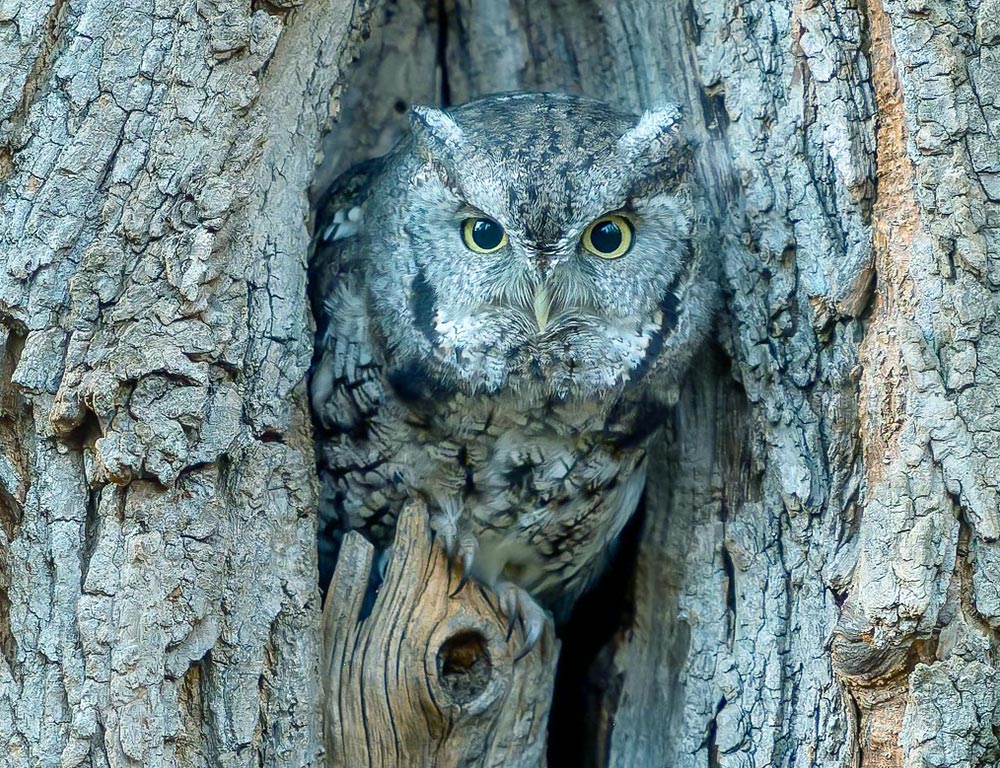
- Scientific Name: Megascops asio
- Population: Common
- Life Span: 8-10 years
- Size: 6-10 inches
- Weight: 4-8 ounces
- Wingspan: 18-24 inches
- Status: Stable
The Eastern Screech-Owl, a master of adaptation, seamlessly integrates into the diverse ecosystems of Arkansas.
With plumage meticulously designed to mimic tree bark or foliage, they become virtually indistinguishable during daylight hours, showcasing remarkable camouflage.
These owls exhibit versatility in nesting, utilizing tree cavities, abandoned nests, or readily accepting artificial nesting boxes in both rural and urban settings.
Nocturnal hunters emerge under the cover of darkness, relying on keen vision and acute hearing to secure a varied diet.
Small mammals, insects, and occasional birds become prey to their swift and silent attacks. Their haunting trill and whinny calls resonate through the night, contributing to the enchanting symphony of the Arkansas wilderness.
2. Great Horned Owl
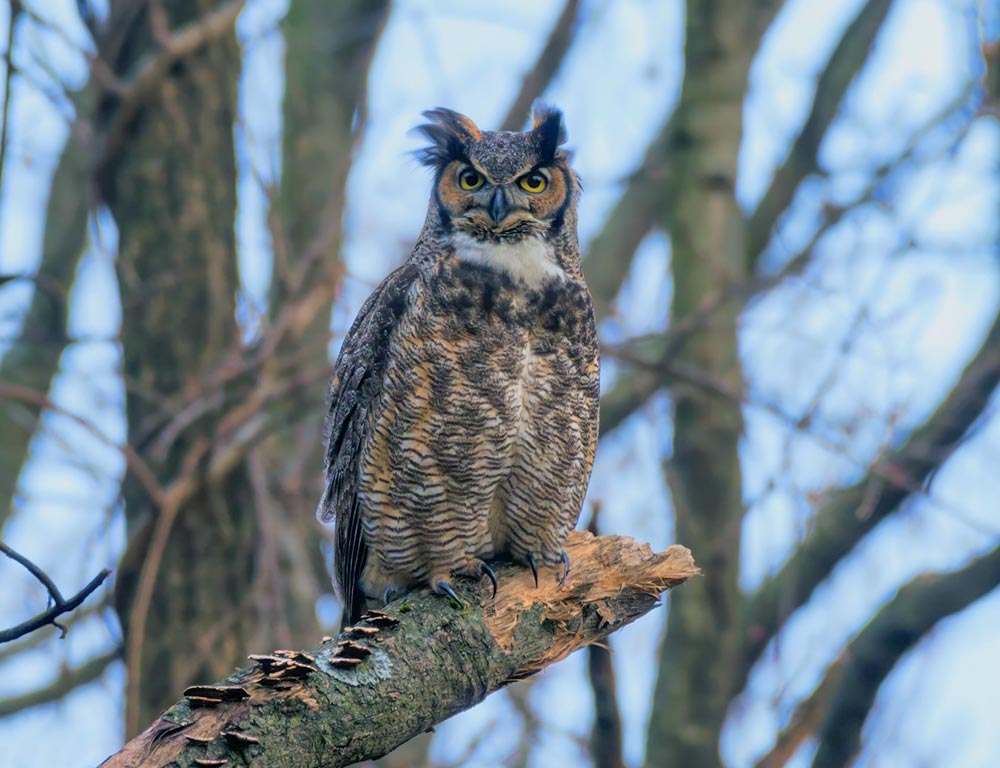
- Scientific Name: Bubo virginianus
- Population: Common
- Life Span: 15-20 years
- Size: 18-25 inches
- Weight: 2-5.5 pounds
- Wingspan: 3.3-4.8 feet
- Status: Stable
The Great Horned Owl, an emblem of nocturnal majesty, reigns over Arkansas’s varied landscapes.
These birds thrive in diverse habitats, from dense forests to urban neighborhoods, demonstrating unparalleled adaptability. Recognizable by their prominent ear tufts, they embody silent, efficient hunters.
Prowess in diverse prey selection sets them apart, targeting mammals, birds, and even skunks. Their deep, resonant hooting calls echo through the night, establishing territorial dominance and adding an air of mystery to the Arkansas wilderness.
As apex predators, they play a crucial role in regulating local ecosystems, embodying the silent rulers of the Natural State’s nocturnal realm.
3. Barn Owl
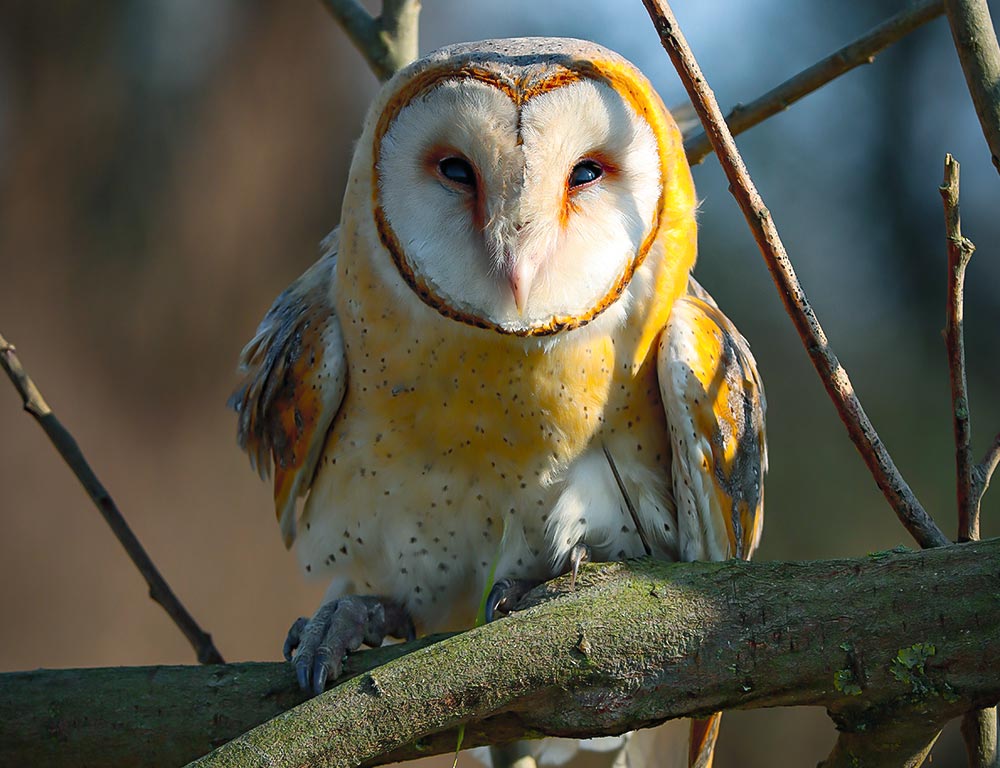
- Scientific Name: Tyto alba
- Population: Declining
- Life Span: 2-5 years
- Size: 12-15 inches
- Weight: 14-24 ounces
- Wingspan: 38-47 inches
- Status: Threatened
With its distinctive heart-shaped facial disc, the Barn Owl graces Arkansas with an ethereal presence and ecological importance.
Unfortunately, facing habitat challenges, they are vital contributors to pest control, specializing in hunting rodents. Preferring open habitats, their ghostly appearance and unique vocalizations create an aura of enchantment.
Silent fliers, their wings create no discernible sound as they navigate the night. Precision hunters execute swift and silent attacks, contributing to the delicate balance of Arkansas’s ecosystems.
Despite their threatened status, the Barn Owl symbolizes the interconnectedness between these magnificent birds and the health of Arkansas’s natural landscapes.
4. Barred Owl
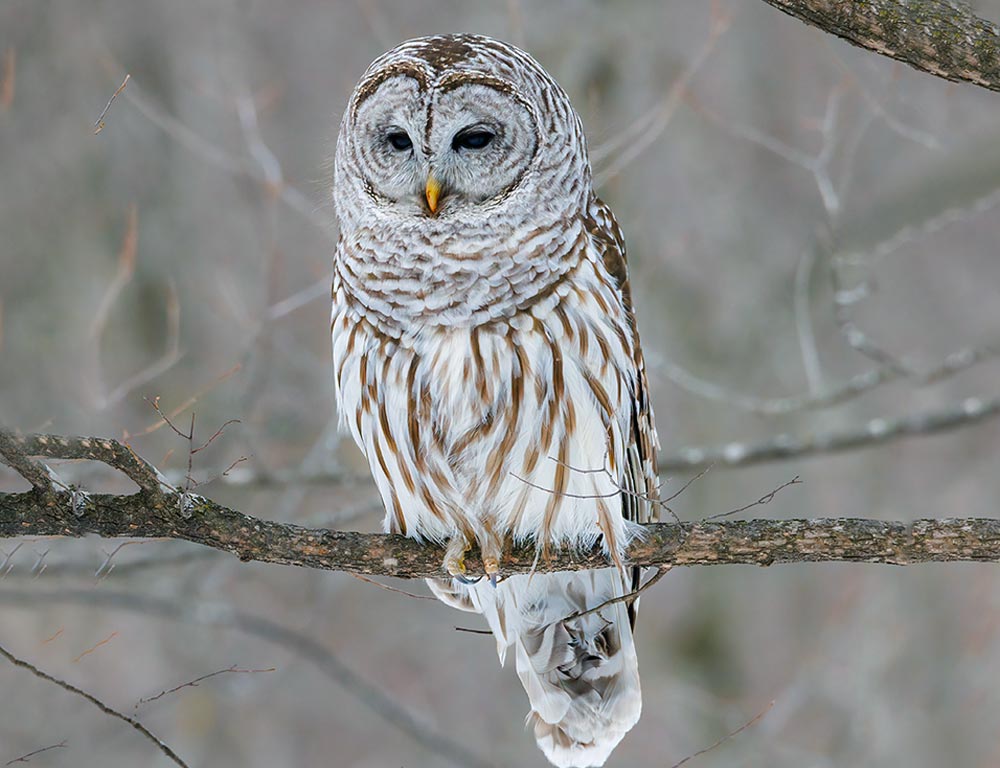
- Scientific Name: Strix varia
- Population: Common
- Life Span: 10-15 years
- Size: 16-24 inches
- Weight: 1.5-2.3 pounds
- Wingspan: 38-49 inches
- Status: Stable
The Barred Owl, with its distinctive “who-cooks-for-you, who-cooks-for-you-all” hooting call, thrives in the woodlands and forests of Arkansas.
These adaptable birds of prey are known for their striking appearance with dark eyes, rounded faces, and barred plumage.
Preferring a diet of small mammals, birds, and amphibians, they silently hunt at night. Their nesting habits involve utilizing tree cavities, with their young often exploring nearby branches before full flight.
Barred Owls have successfully adapted to suburban and urban environments, showcasing their resilience in the face of habitat changes. Their enigmatic presence adds a layer of fascination to the diverse ecosystems of Arkansas.
5. Burrowing Owl
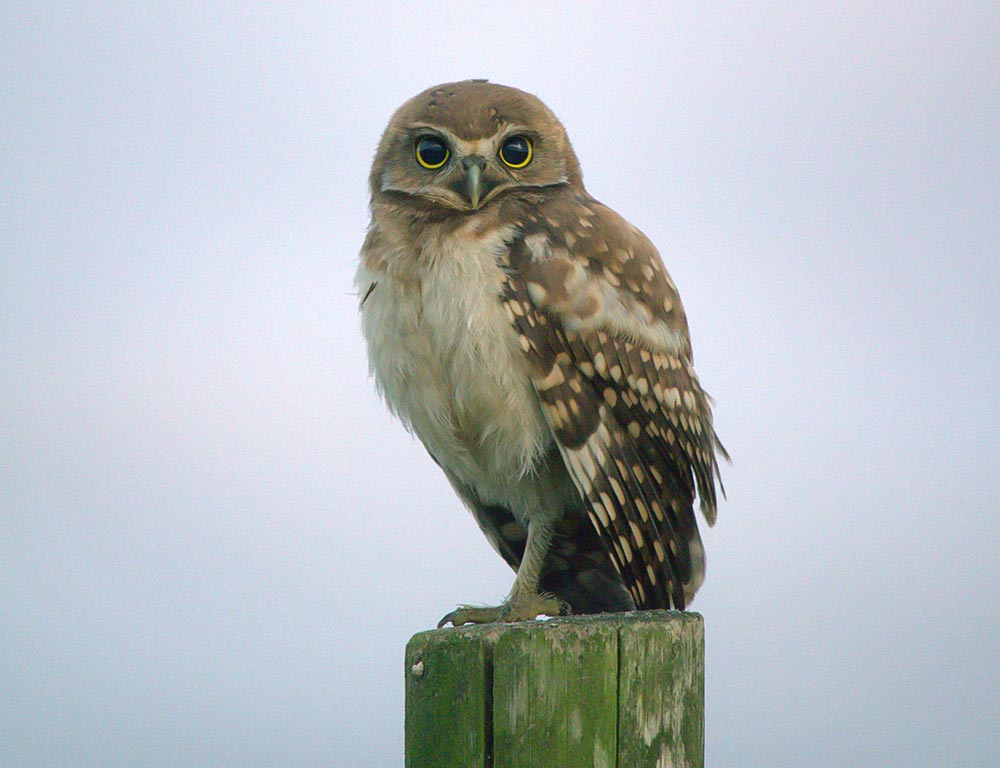
- Scientific Name: Athene cunicularia
- Population: Declining
- Life Span: 6-8 years
- Size: 7-10 inches
- Weight: 4-7 ounces
- Wingspan: 21-24 inches
- Status: Threatened
The diminutive Burrowing Owl, with its endearing appearance and characteristic bobbing motion, faces challenges in Arkansas due to habitat loss. Uniquely, they reside in burrows, often repurposing those created by mammals like prairie dogs.
Primarily diurnal, they prefer open grasslands where their distinctive white eyebrows and spotted plumage aid in camouflage. Burrowing Owls are skilled hunters, preying on insects, small mammals, and occasionally birds.
As ground-nesters, their nesting habits involve utilizing burrows, showcasing a fascinating adaptation to their chosen environment. Conservation efforts are crucial to ensure the continued presence of these charming, ground-dwelling owls in the Arkansas landscape.
6. Long-eared Owl
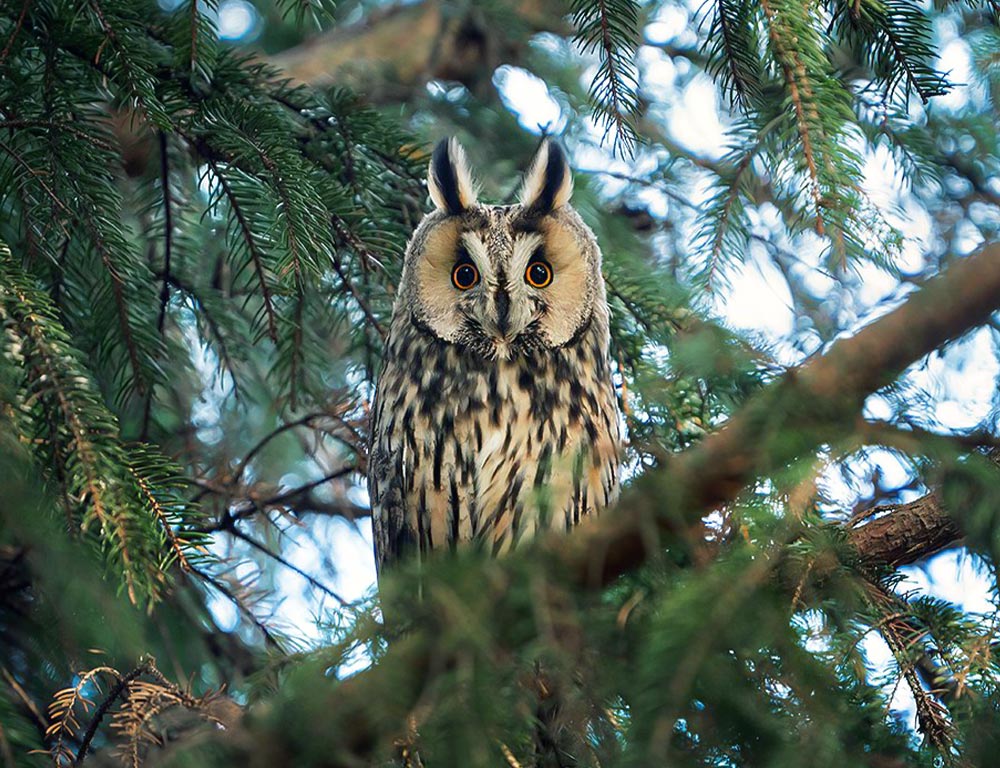
- Scientific Name: Asio otus
- Population: Decreasing
- Life Span: 4-10 years
- Size: 13-16 inches
- Weight: 7-16 ounces
- Wingspan: 35-42 inches
- Status: Concern
The Long-eared Owl, characterized by its long ear tufts, faces population challenges in Arkansas. Preferring coniferous or mixed woodlands, these nocturnal hunters prefer a diet consisting mainly of small mammals.
Their nesting habits involve utilizing abandoned crow or raptor nests, showcasing adaptability. Long-eared Owls are known for their cryptic plumage, providing effective camouflage among dense foliage.
Though their presence in Arkansas is decreasing, these elusive birds contribute to the intricate balance of the state’s ecosystems. Conservation efforts are essential to mitigate threats and ensure the continued existence of the Long-eared Owl in Arkansas’s diverse habitats.
7. Northern Saw-whet Owl
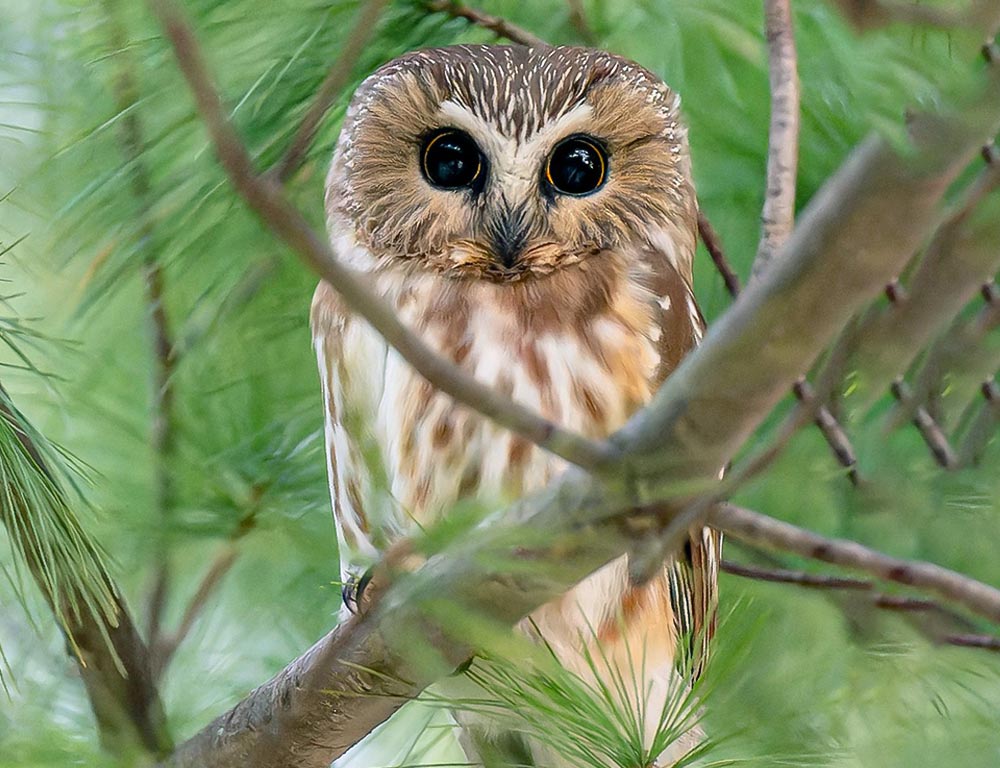
- Scientific Name: Aegolius acadicus
- Population: Stable
- Life Span: 3-7 years
- Size: 7-8 inches
- Weight: 2-5 ounces
- Wingspan: 16-18 inches
- Status: Secure
The Northern Saw-whet Owl, a petite and elusive resident of Arkansas, is often overlooked due to its small size and secretiveness. Found in dense forests, these owls are skilled hunters specializing in insects and small mammals.
They communicate during the breeding season with a distinctive tooting call resembling a saw being sharpened. They utilize tree cavities for nesting and roosting, contributing to the rich biodiversity of Arkansas’s woodlands.
Although their presence might go unnoticed, the Northern Saw-whet Owl is vital in controlling insect populations and maintaining the delicate balance of the state’s ecosystems.
8. Short-eared Owl
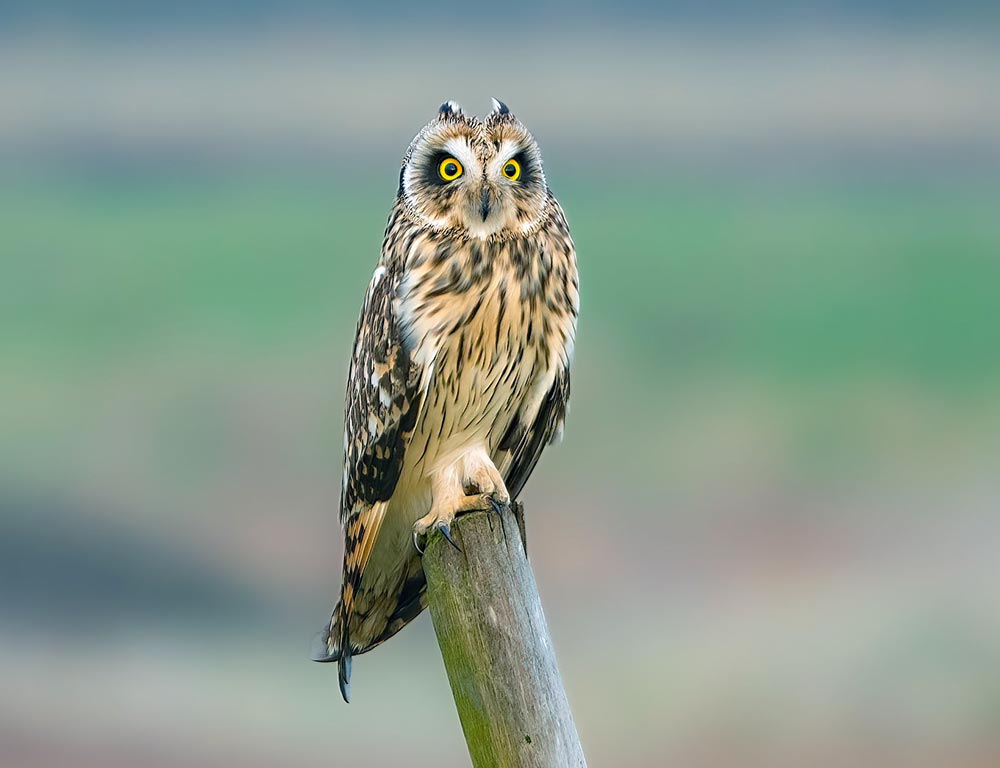
- Scientific Name: Asio flammeus
- Population: Declining
- Life Span: 4-6 years
- Size: 13-17 inches
- Weight: 7-16 ounces
- Wingspan: 33-43 inches
- Status: Concern
The Short-eared Owl, characterized by its distinctive facial disk and conspicuous ear tufts, faces habitat challenges in Arkansas. Preferring open habitats like grasslands and marshes, these diurnal hunters primarily feed on small mammals.
Their wings display a unique hovering flight pattern during hunts, making them distinct among owls. Short-eared Owls nest on the ground, utilizing grassy areas for concealment.
Conservation efforts are crucial to mitigate habitat loss and ensure the continued presence of these captivating owls in the diverse landscapes of Arkansas.
9. Snowy Owl
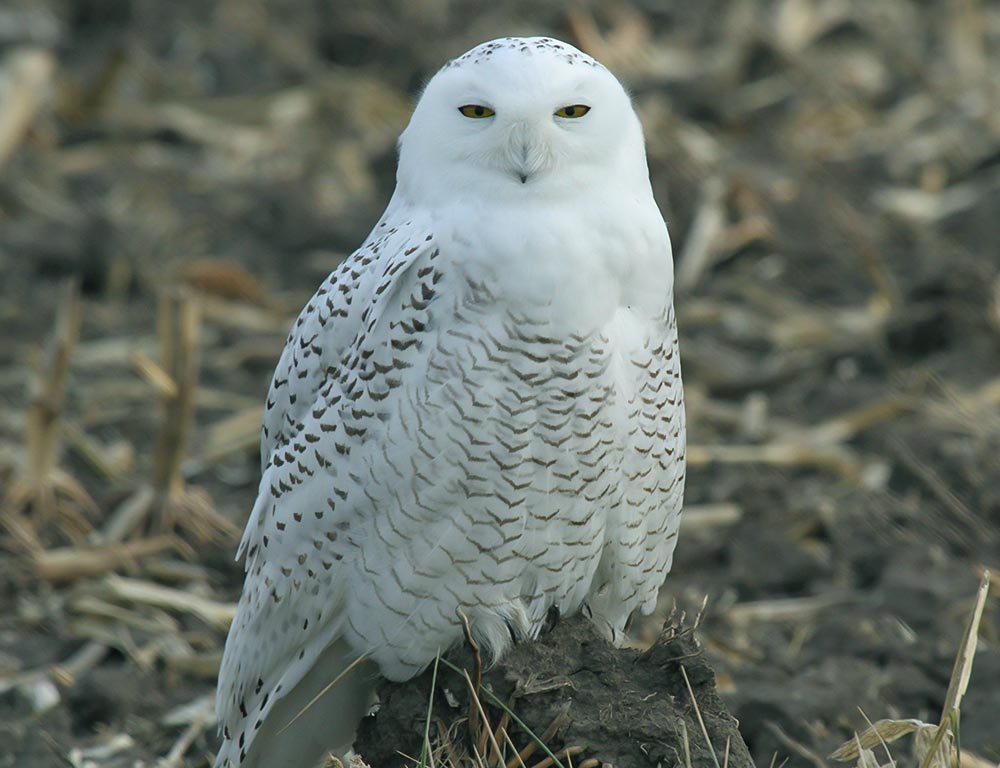
- Scientific Name: Bubo scandiacus
- Population: Variable (Irregular winter visitors)
- Life Span: 9-10 years
- Size: 20-28 inches
- Weight: 3-6.6 pounds
- Wingspan: 49-57 inches
- Status: Secure (Breeding population)
The Snowy Owl, a symbol of the Arctic, occasionally graces Arkansas as an irregular winter visitor. Their striking white plumage and large size stand out against the state’s diverse landscapes.
Primarily Arctic inhabitants, these owls migrate south for food during harsh winters. Their diet consists mainly of lemmings and other small mammals.
Snowy Owls showcase adaptability in choosing varied habitats, from open fields to coastal areas. While not a regular resident, the occasional presence of Snowy Owls adds an element of Arctic enchantment to the natural wonders of Arkansas.
Wrapping Up
The enchanting world of owls unfolds in the heart of Arkansas’s diverse landscapes, a symphony of winged wonders contributing to the state’s ecological tapestry.
From the adaptable Eastern screech owl to the majestic Great Horned Owl, each species weaves its unique story into the fabric of Arkansas’s wilderness.
The resilient Barred Owl, the ground-dwelling Burrowing Owl, and the elusive Long-eared Owl further enrich this nocturnal narrative.
Exploring the Arkansas skies, the Northern Saw-whet Owl, the Short-eared Owl, and the occasional visitor, the Snowy Owl, complete this avian ensemble.
As these feathered inhabitants navigate the night, they are captivated by their mesmerizing calls and play vital roles in maintaining ecological balance.